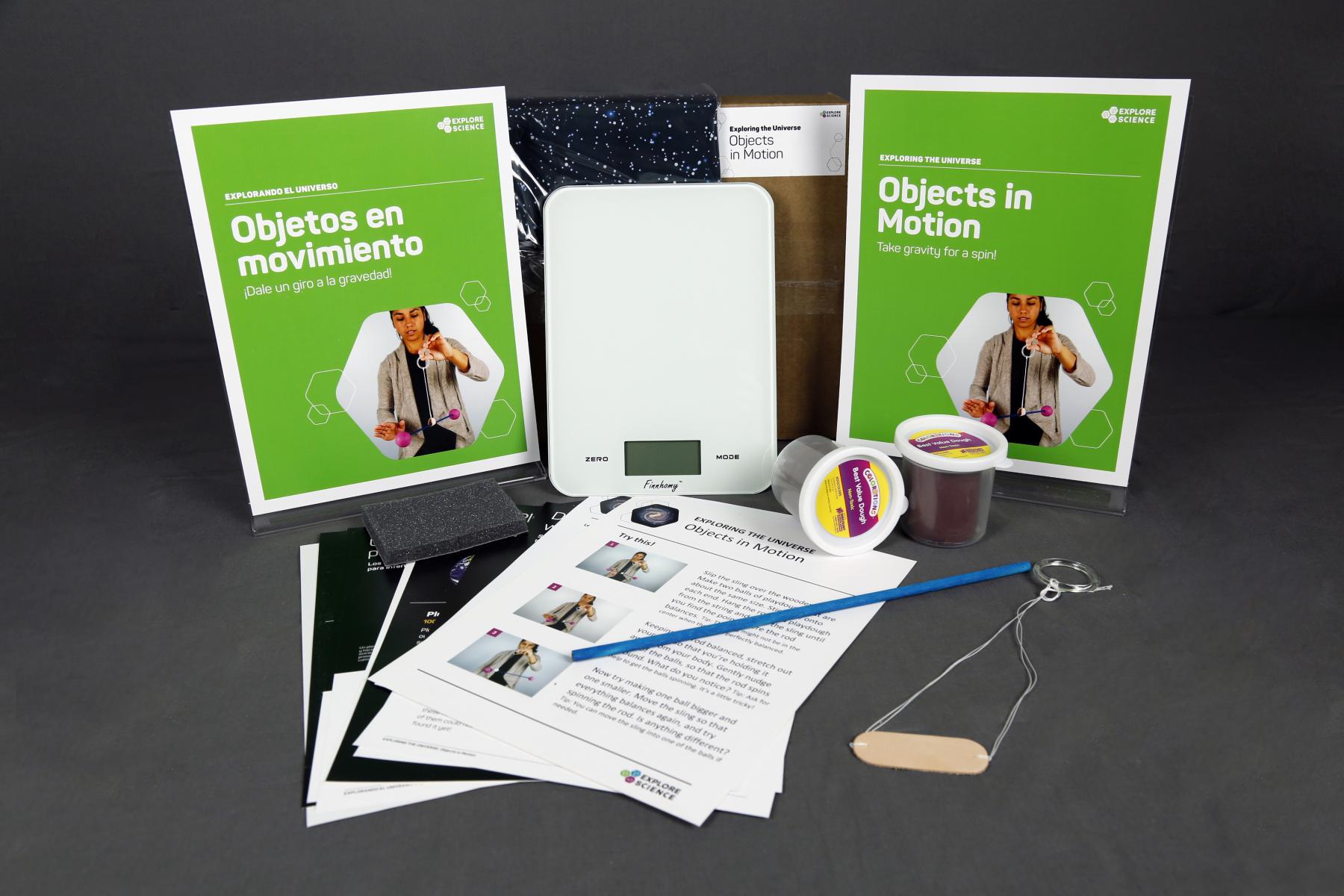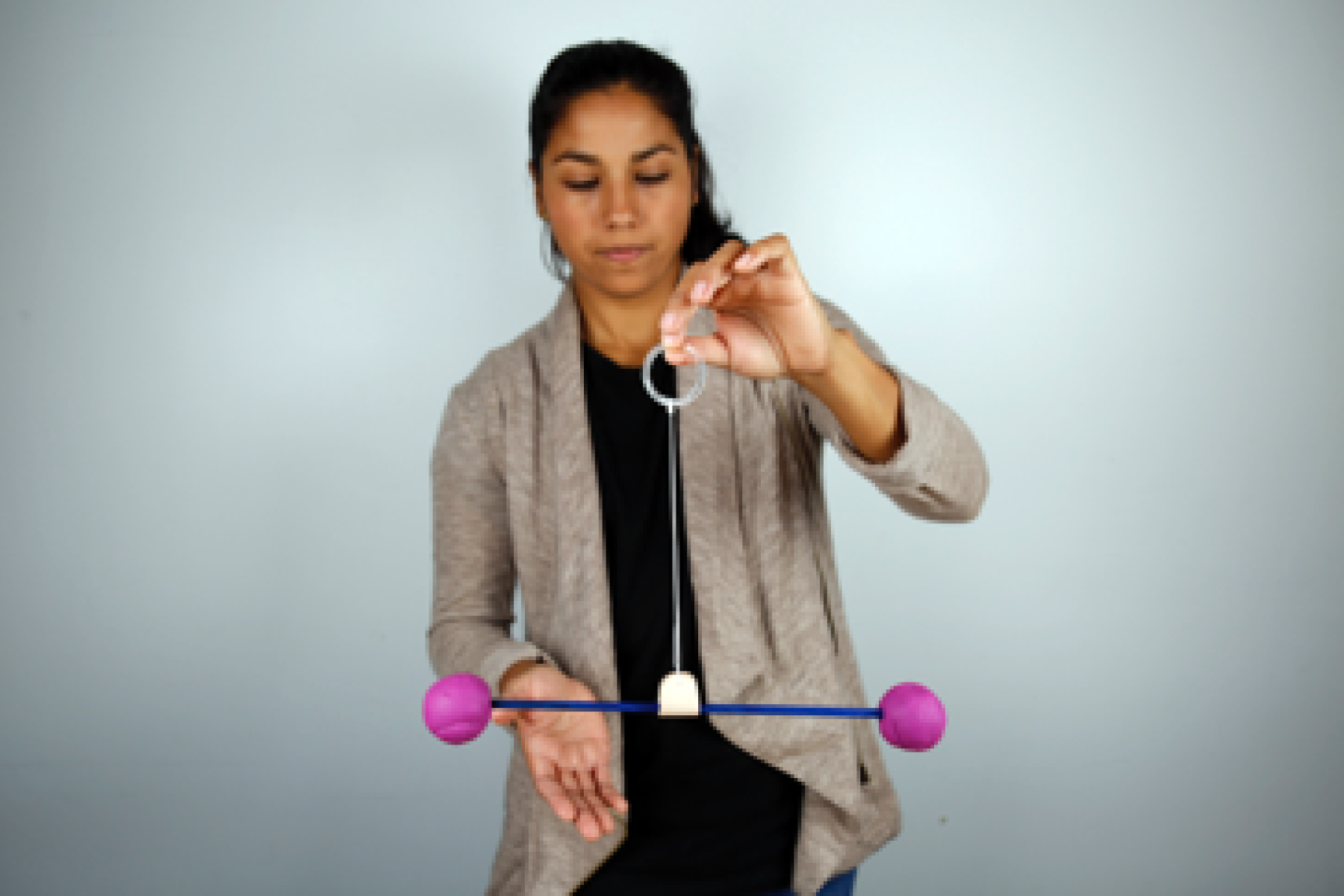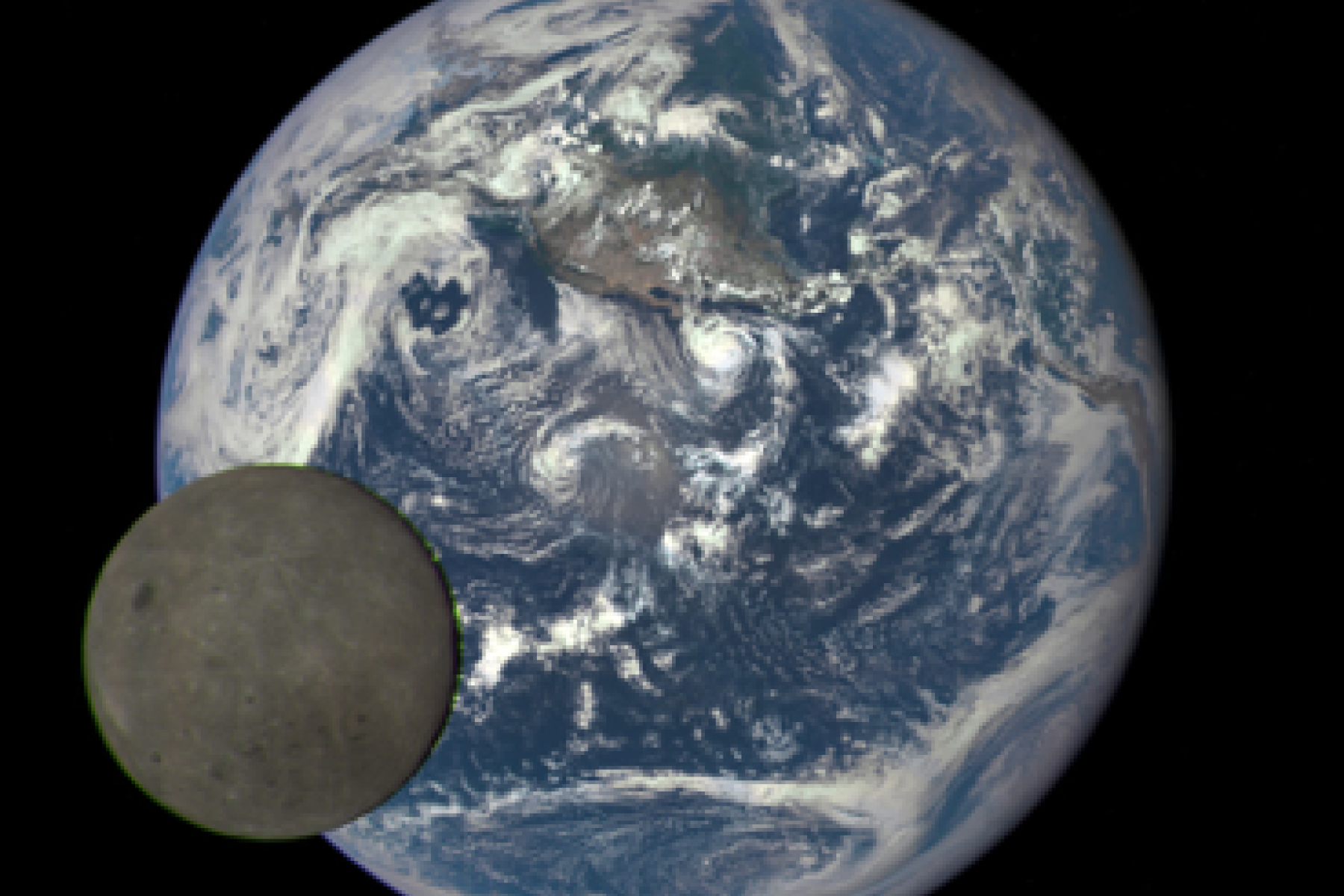DESCRIPTION
"Exploring the Universe: Objects in Motion" encourages participants to explore the complex but predictable ways objects in the universe interact with each other. Stars, planets, moons, and other objects in space orbit around each other because of gravity, and NASA scientists can use what we already know about the laws of physics to make new discoveries and predictions. Participants in this activity use "orbiting" clay balls to make simple, functioning models of interacting objects in space.
DESCRIPTION
"Exploring the Universe: Objects in Motion" encourages participants to explore the complex but predictable ways objects in the universe interact with each other. Stars, planets, moons, and other objects in space orbit around each other because of gravity, and NASA scientists can use what we already know about the laws of physics to make new discoveries and predictions. Participants in this activity use "orbiting" clay balls to make simple, functioning models of interacting objects in space.
TRAINING VIDEOS
OBJECTIVES
LEARNING GOALS
• Objects in the universe interact in complex but predictable ways.
• Stars, planets, moons, and other objects in space orbit around each other because of gravity.
• NASA scientists use what we know about the laws of physics to make new predictions and discoveries.
DOWNLOAD FILES
- Objects in Motion activity guide (DOCX)
- Objects in Motion activity guide (PDF)
- Objects in Motion facilitator guide (PDF)
- Objects in Motion info sheet "Discovering Exoplanets with the Wobble Method" (PDF)
- Objects in Motion info sheet "Pluto and Charon" (PDF)
- Objects in Motion ratio sheet (PDF)
- Objects in Motion table sign (PDF)
- Objects in Motion materials (JPG)
- Objects in Motion activity guide (Spanish) (PDF)
- Objects in Motion activity guide (Spanish) (DOCX)
- Objects in Motion info sheet "Discovering Exoplanets with the Wobble Method" (Spanish) (PDF)
- Objects in Motion info sheet "Pluto and Charon" (Spanish) (PDF)
- Objects in Motion ratio sheet (Spanish) (PDF)
- Objects in Motion table sign (Spanish) (PDF)
Credits
The Science Museum of Minnesota
This material is based upon work supported by NASA under cooperative agreement award number NNX16AC67A. Any opinions, findings, and conclusions or recommendations expressed in this material are those of the author(s) and do not necessarily reflect the view of the National Aeronautics and Space Administration (NASA).
Creative Commons Attribution Non-Commercial Share Alike 3.0 United States (CC BY-NC-SA 3.0 US).
View more details

NISE Network products are developed through an iterative collaborative process that includes scientific review, peer review, and visitor evaluation in accordance with an inclusive audiences approach. Products are designed to be easily edited and adapted for different audiences under a Creative Commons Attribution Non-Commercial Share Alike license. To learn more, visit our Development Process page.



